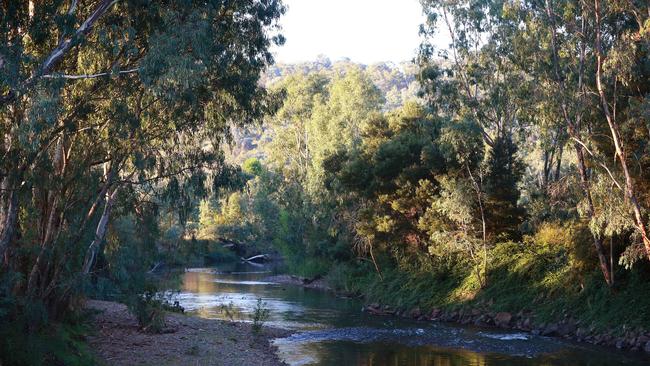Murray Darling Basin Plan: Productivity Commission warns of $480 million cost blowout
THE cost of implementing the Murray Darling Basin Plan could blow out by more than $480 million if key projects fail and “unrealistic” deadlines aren’t extended, a new report has found.

THE cost of implementing the Murray Darling Basin Plan could blow out by more than $480 million if key projects fail and “unrealistic” deadlines aren’t extended, a new report has found.
The Productivity Commission’s scathing draft review of the basin plan is warning major aspects of the plan could fail in the coming years if changes aren’t made — and the onus rests squarely on basin governments
“There is a lack of decisive direction-setting leadership and clarity about responsibility for what increasingly will be polarising activities in some communities,” the report states.
“The management of the basin is prone to poor credibility created by decades of states promoting their own interests in negotiations.”
The commission has made 35 recommendations, including extending deadlines for delivering projects aimed at saving 605GL for the consumptive pool; extending timelines for finishing water resource plans; and creating a new strategy for recovering an extra 450GL in environmental water.
It’s also recommended the Murray Darling Basin Authority be split into two separate offices — the Murray Darling Basin Corporation and the Basin Plan Regulator — to remove the conflict between the two roles.
Commissioner Jane Doolan said the five-year review — which was required by legislation — found there had been a lot of significant measures already achieved, such as the majority of water recovery and “pretty robust” environmental water management.
However, the next five years could make or break the plan’s success.
“Basin governments need to take charge of this,” Ms Doolan said.
“They need to pull together an integrated plan for how it will be delivered, how consultation should occur and how it should go ahead.
“Basin governments have been in negotiation mode and protecting their own patch, but they’ve settled most aspects of the plan so now they need to move back to a collaborative approach.”
CALL TO EXTEND BASIN PLAN DEADLINES
The Federal Government has been hammering home its commitment to deliver the plan “on time and in full”.
However, the commission says time frames in the plan should be extended, warning that “highly ambitious, if not unrealistic” deadlines could see supply projects doomed to failure.
The projects — which aim to reduce the amount of water to be recovered by 605GL while still delivering the same environmental benefits — need to be complete by 2024, but many are behind schedule.
If the deadline is not met, the Government will have to make up the shortfall through more direct buybacks — which many communities oppose — or more infrastructure works. It’s estimated this could cost taxpayers more than $480 million and delay the environmental benefits.
“Giving them every opportunity to succeed could save the basin governments in the order of hundreds of millions of dollars and significantly reduce community angst,” the report said.
Ms Doolan said deadlines around easing constraints in the system — projects that will allow higher environmental flows to be pumped through the system, for greater environmental benefit — were also unrealistic.
Development of water resource plans by the states was also behind schedule, with only seven out of 20 complete; the deadline of June 2019 should be also be extended so their quality was not compromised.
“We’re looking ahead and saying, ‘If you stick to some of (the deadlines) then there are risks involved, and potentially increases the likelihood of projects failing — and the consequences of that is needing more water from irrigation,” Ms Doolan said.
NEW APPROACH FOR 450GL
The commission criticised the Federal Government for starting recovery of an extra 450GL — 62GL of which must be done to offset the 605GL cut — before state governments had agreed on a plan, including how to ensure there are no socio-economic detriments.
It warned this meant water could be recovered from the Northern Basin and “may not be useful” in achieving the environmental goals of the southern basin.
There is also no requirement for a cost-benefit assessment of the 450GL, and its recovery could more expensive than anticipated.
The commission recommends a new strategy that “explicitly considers” the socio-economic effects and any recovery should happen in line with easing constraints.
“”Program design is critical but the timing is as well … so there’s confidence the water is being used for the objective intended,” Ms Doolan said.
GOVERNANCE, TRANSPARENCY KEY ISSUES
Ms Doolan said basin governments now needed to take the lead on implementing the plan.
She said the MDBA’s advisory and regulatory roles should be separated, as the there would be increasing conflict between the two as time went on.
“The MDBA will be assessing the performance of states when it has been the trusted adviser,” she said.
“Both are becoming increasingly important so the conflict is increasingly stark.”
The Australian Conservation Foundation welcomed the “clear-eyed” assessment of governance issues.
“The commission’s proposed solution of creating a new regulator operating independently of the MDBA is worthy of further consideration,” ACF’s campaigns director Dr Paul Sinclair said.
Dr Sinclair argued any blowout in recovering water was “a problem of basin governments’ own making”.
“They have restricted themselves to investing in the most expensive and least effective forms of water recovery,” he said.
“The final commission report should make it clear that governments must be allowed to buy water back to meet recovery targets.”
National Irrigators’ Council chief executive Steve Whan said the report was a “wake up call” and reflected irrigators’ concerns about the time frames.
“These projects must achieve the environmental benefits intended, if not we risk more water being taken out of productive use,” Mr Whan said.
The draft report is now open for public consultation, with hearings in October. The final report is due end of December.


